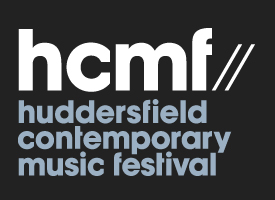 This morning saw Brian Ferneyhough back at St Paul’s Hall, his music this time being performed by the outstanding Quatuor Diotima, alongside works by Gérard Pesson, Miroslav Srnka and György Ligeti.
This morning saw Brian Ferneyhough back at St Paul’s Hall, his music this time being performed by the outstanding Quatuor Diotima, alongside works by Gérard Pesson, Miroslav Srnka and György Ligeti.
Ligeti’s 1968 String Quartet No. 2 came last in the concert, but i mention it first because—as Ligeti’s music always tends to do—it forced a complete reappraisal of the three pieces heard before it. One very basic issue it highlighted was of the current predilection for larger-scale forms—or, conversely, composers’ (perhaps passive) reluctance to articulate works through relatively short movements. Sections and episodes don’t count in this respect; they’re an entirely different kind of demarcation and don’t induce the same sort of ‘soft reset’ brought about by the separation of movements. Let me just clarify that i don’t think one approach is better than the other; it’s just interesting to reflect that—with the obvious exception of James Dillon’s New York Triptych—everything i’ve heard both in this concert and the entire previous day consisted of substantial single spans.
Returning to Diotima, they began with the first UK performance of Pesson’s Farrago. Pesson’s lengthy programme note makes the piece sound more complicated than it actually is. Structurally, Farrago is very formalised, episodic and highly rhythmic. Its rhythmic language is the work’s driving force in more than just the obvious way; the material’s underlying regularity goes a long way to reinforcing its dual tone of ephemerality and ethereality. Much of the music is very quiet, and almost all of it is extremely delicate, like suspended pieces of glass turning in the wind, sunlight glinting off their edges. That suggests cool placidity, but it’s not without an order of violence too, although the instruments’ fiercely sharp gestures are checked by soft dynamics and muting articulations (sul tasto; beyond the bridge) that render them more visually than sonically startling, like being flagellated with feathers. Farrago feels long, but the extent of its fantasy is such that it remains an engrossing listen.
Miroslav Srnka’s Engrams, also receiving its UK première, didn’t prove anywhere near so convincing. Like Pesson, Smka opted for very quiet dynamics, but his highly gestural material, somewhat inventive but not greatly differentiated, became increasingly frustrating. The glistening surface offered little by way of purchase; ideas were passed around, imitated, collaborated upon, but there was an abiding sense of arbitrariness that wasn’t helped by the lack of anything concrete. At nearly half an hour it was also seriously overlong; being teased and tickled like this quickly becomes annoying.
The oboe’s master of masters Christopher Redgate joined Diotima for the world première of Ferneyhough’s Schatten aus Wasser und Stein (“shadows made of water and stone”—the composer’s preferred translation), turning the group into a very convincing quintet, so well did he match the strings in terms of timbre and register. Both the work itself and wider compositional concerns had been broached in the pre-concert talk, and one detected an implied (Ferneyhough didn’t directly confirm this) ongoing interest in things ephemeral: the blast-wake of destructive energies (in earlier work), the instantaneous sparks of yesterday’s Liber Scintillarum, and now shadows—which Ferneyhough characterised as being both diffuse and sharp-edged. This perhaps goes some way to account for the intensely mercurial nature of Ferneyhough’s music, ever shifting between layers of focus and concomitant material implication. In Redgate and Diotima’s performance, there was an interesting tension between effort—the music is clearly as technically challenging as ever—and relaxation, communicated strongly by the players’ shifting body language. The former of those has been discussed ad nauseam over the years; regarding the latter, the performance was a powerful reminder of how recordings of Ferneyhough’s music never seem adequately to capture the wit so often evident in his material, the exuberance and potency of the instrumental interactions, and the latent lyricism i spoke of yesterday, glimpsed rather than indulged, but rarely absent. This last aspect seems particularly important in Schatten aus Wasser und Stein, melody constantly breaking out, often at some length. In this world première, despite the players still coming to terms with the piece, one glimpsed the beginnings of a very telling addition to Ferneyhough’s output.

Hi Simon, I agree totally with what you say. Smka’s piece certainly needed some editing!. I loved the Ferneyhough piece and it was super to be able to listen to the composer earlier talk about his piece. Interested readers might like to know that the full Huddersfield interview will be posted online later by the people at the Institute of Musical Research. A workshop that took place prior to Huddersfield is also on You Tube. Just type Schatten Aus Wasser to get three short clips of Ferneyhough and Redgate.
Thanks Alan, that’s very useful to know.
Whereas I disagree. I thought Farrago tedious and uninteresting and Engrams quite beautifully captivating. As a non-music scholar this may be because I failed to appreciate the technical intricacies contained within but Pesson’s work appeared more concerned with doing all those things that modern string quartets are supposed to (loud/quiet/loud, playing below the bridge, battering and scraping – I found it quite formulaic and not at all etherial) whereas the Srnka at least went somewhere different. I especially liked to zoning in and out of half-perceived melodies, much like James Kirby’s work as The Caretaker.
I agree with you about the Ferneyhough (though I feel I need to listen to it again to appreciate what it was doing). And the Ligeti was, for me, in a different class.